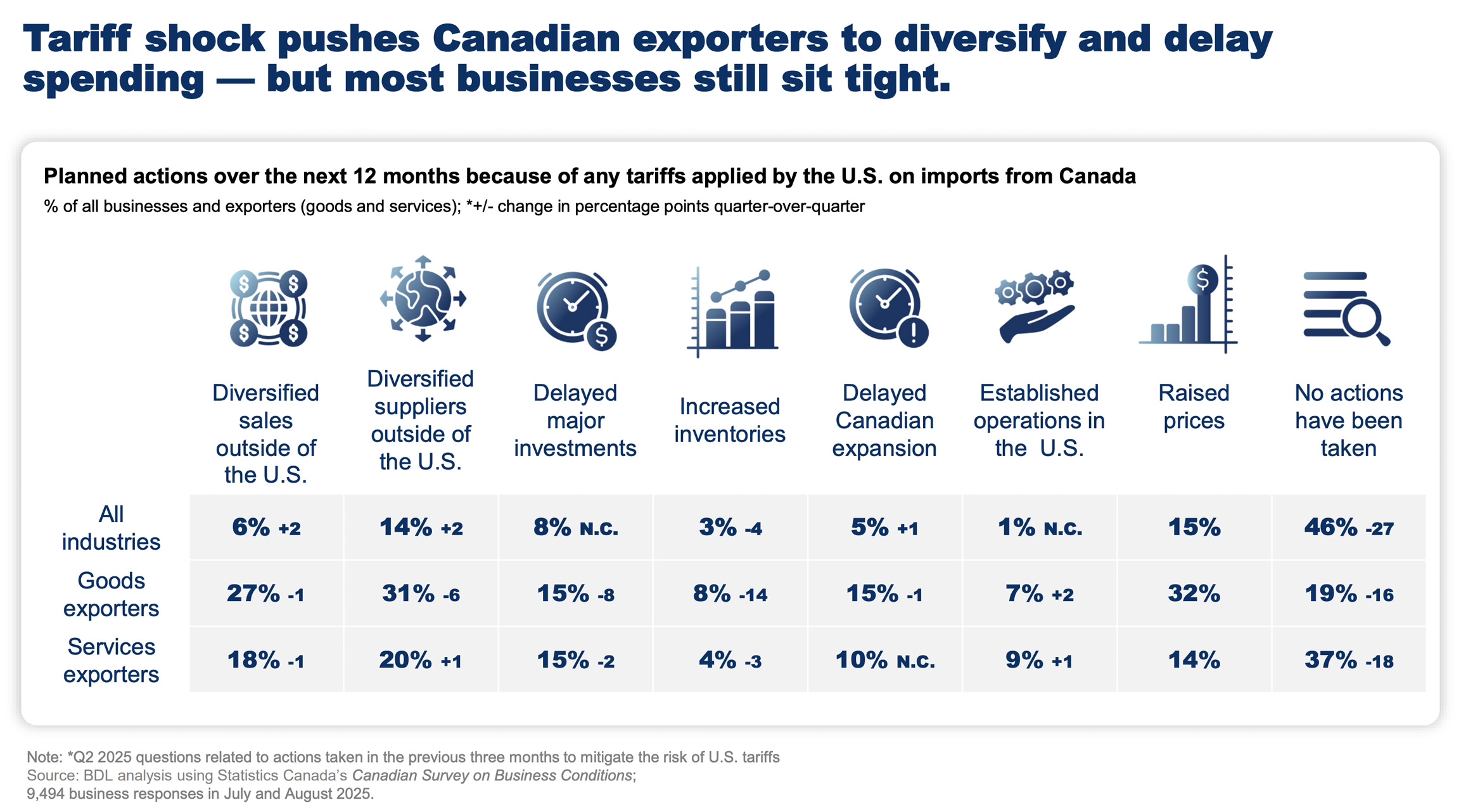Blog /
Businesses Showing Remarkable Resilience: Key Findings from Business Insights Quarterly (Q3 2025)
Businesses are learning to live with uncertainty as more firms take proactive steps by diversifying suppliers and increasing their use of CUSMA preferences.

Canada’s economy is showing resilience in some areas but remains stuck overall in a slow-growth gear. While businesses are adapting to trade shocks and weaker economic activity, persistent costs, consumer demand and labour challenges continue to weigh on their confidence, hiring and investment decisions.
On trade specifically, we’re seeing businesses learning to live with uncertainty. More firms are taking proactive steps by diversifying suppliers and increasing their use of CUSMA preferences. Encouragingly, the majority of firms surveyed this quarter indicated they could withstand current tariffs and uncertainty for more than a year.
Business Outlook
Business sentiment has remained weak for the past five consecutive quarters. However, it hasn’t dipped since Q2, holding steady at 95 (below 100 indicates deteriorating sentiment).
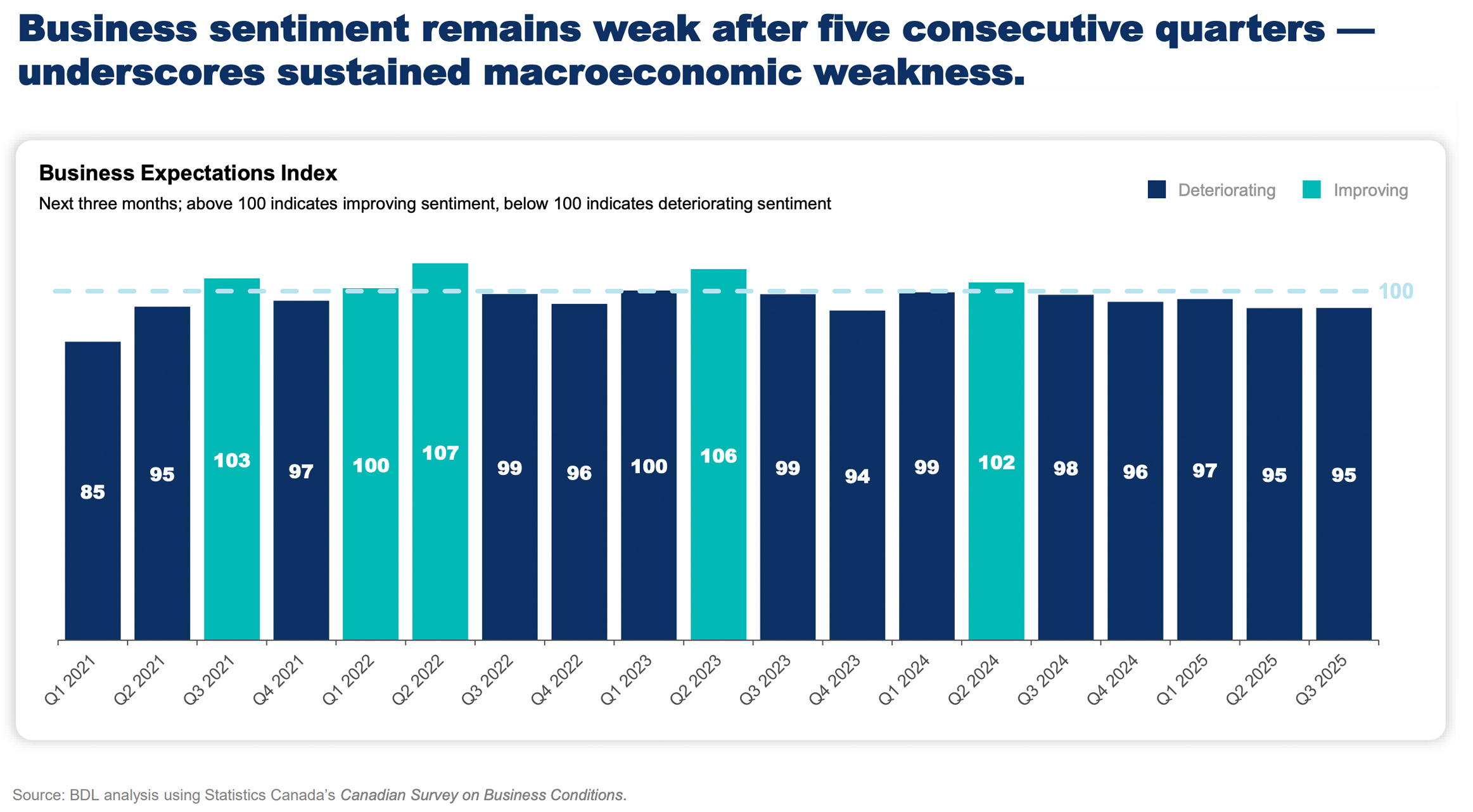
Large firms (100+ employees) had a surge in optimism with their outlook increasing by 11 points, possibly driven by stronger risk management, global reach and capital access.
Sitting at 20%, business pessimism came close to reaching the Q4 2023 high of 21%.
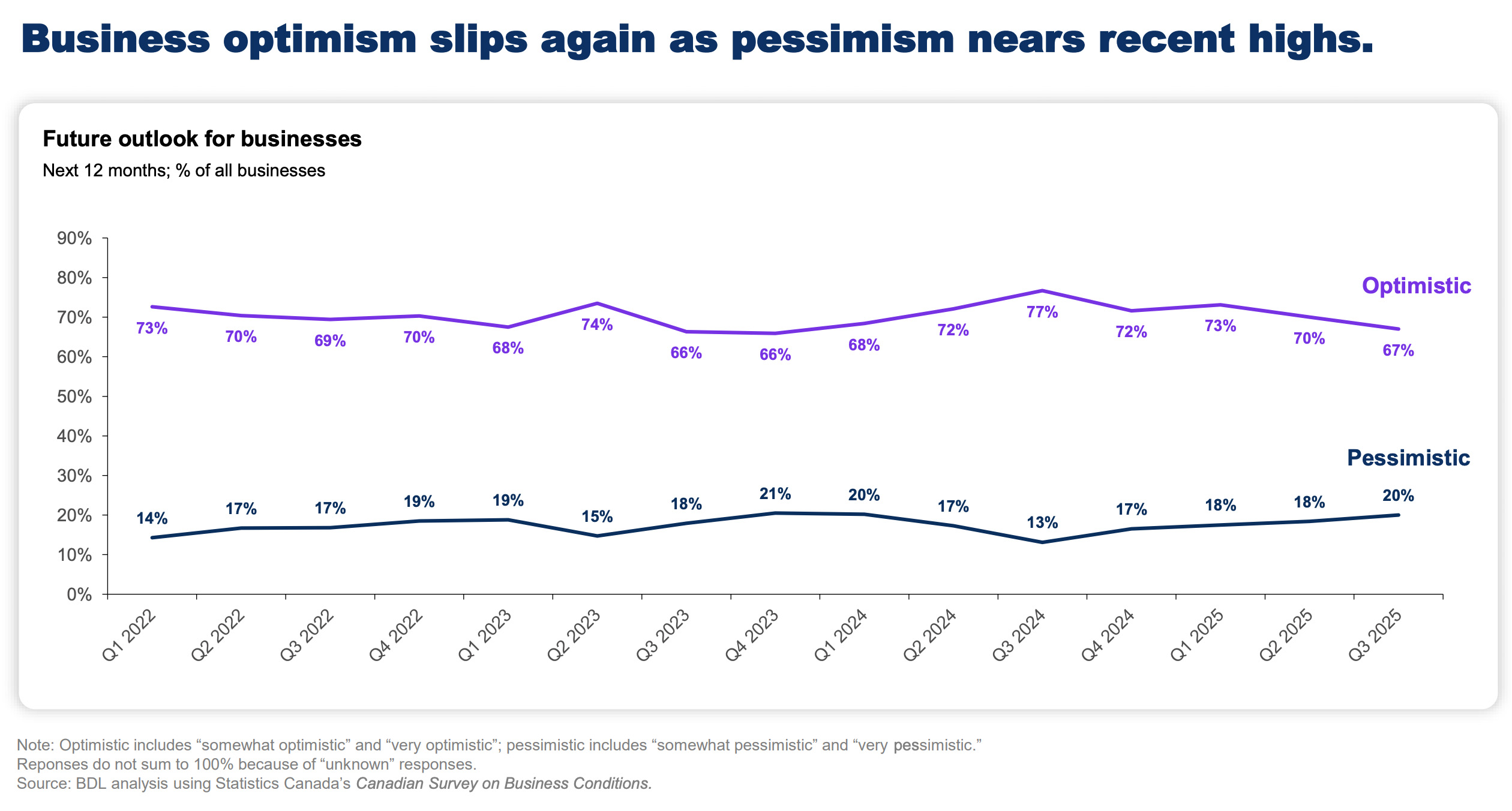
Business Obstacles
The percent of businesses that are expecting obstacles over the next three months decreased across the board. Inflation topped the charts at 45% with costs of inputs and interest and debt rates both trailing by 20 percentage points. Overall, costs challenges held their number one spot with customer demand and labour challenges taking the second and third spots respectively.
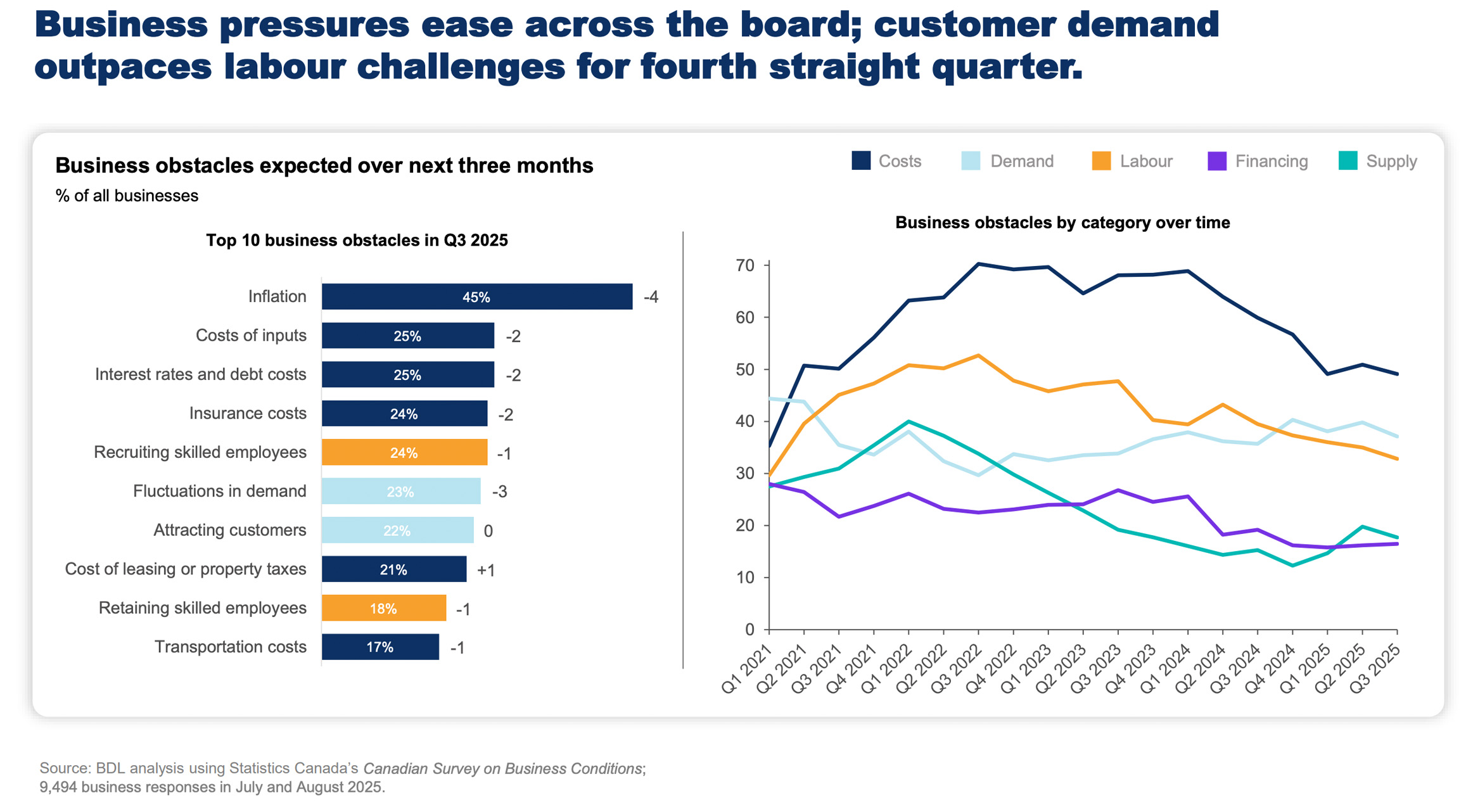
Labour Market
Labour challenges, which includes recruiting skilled employees, retaining skilled employees, and workforce shortages, remain a top 3 business obstacle. Ongoing challenges are concentrated in temporary foreign worker (TFW) and blue-collar sectors like accommodation and food services, construction, and wholesale trade.
Youth unemployment
The youth unemployment rate remains above its pre-pandemic average, raising concerns about long-term workforce integration. However, despite some theories to the contrary, there is only a weak link between TFW usage and youth unemployment. Education, not TFWs, is a stronger signal of youth unemployment. Youth with less education (high school diploma or lower) experienced more unemployment.
Trade
A third of Canadian business engaged in trade are negatively impacted by U.S. tariffs, with manufacturers and retailers hit hardest. At the same time, CUSMA utilization jumped to 53% in July — a 20-year high.
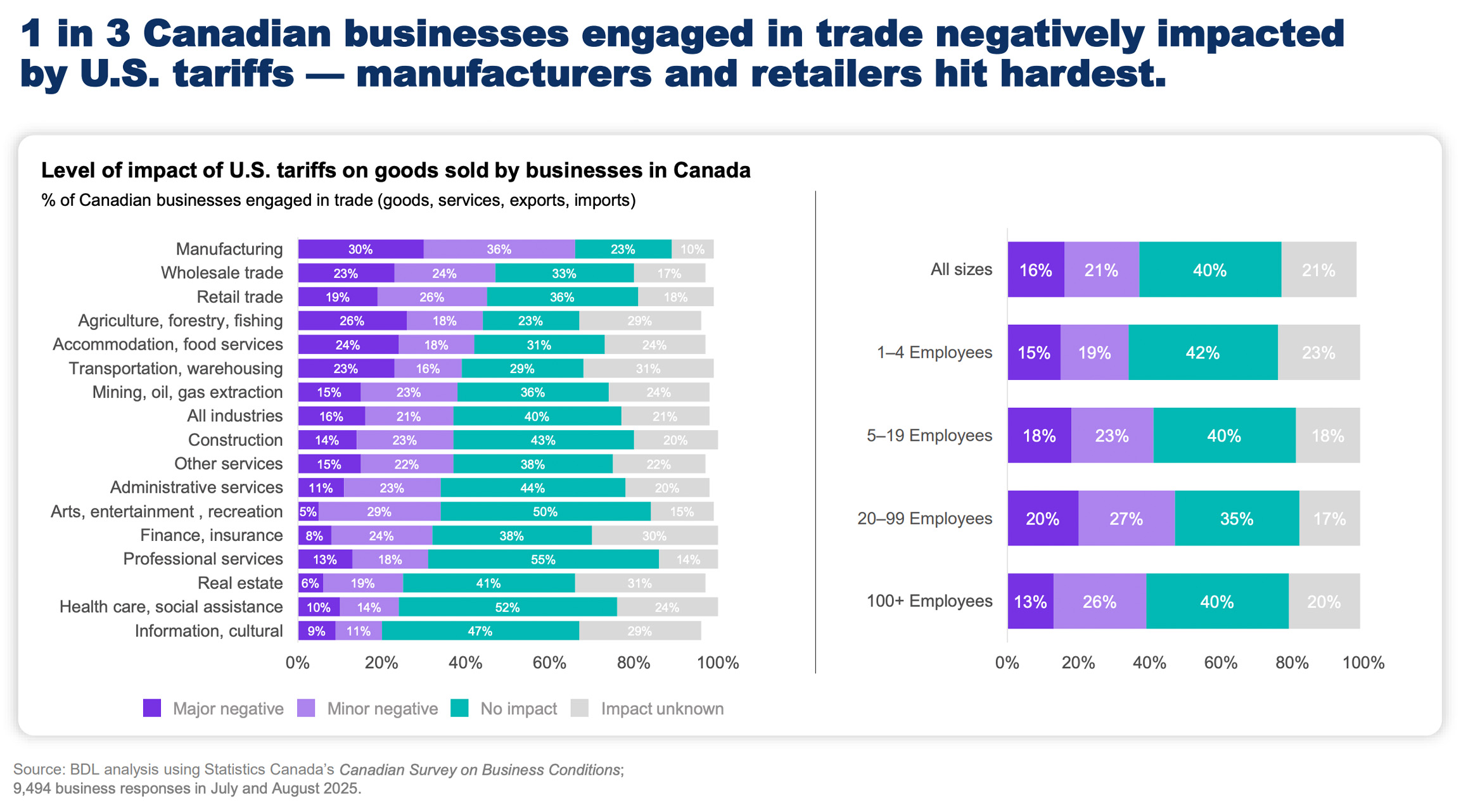
Tariffs are pushing many Canadian goods exporters to diversify their sales (27%) and suppliers (31%) outside of the U.S., even as almost 1 in 5 choose to sit tight.
